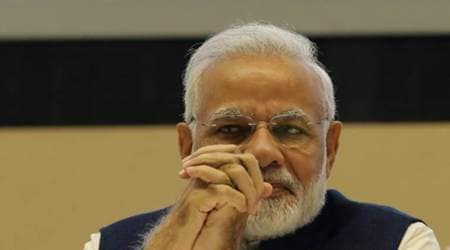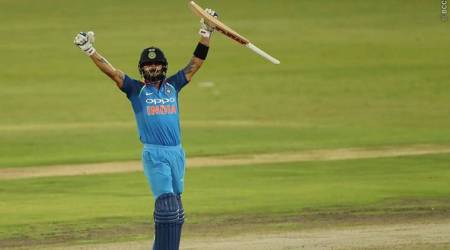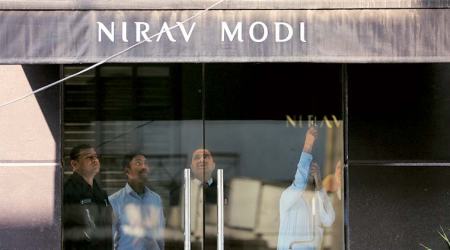 Amrita Pritam’s portrait that features in an installation
Amrita Pritam’s portrait that features in an installation
From school textbooks to tourism brochures, Punjab is highlighted as the land of five rivers. A true-blue Punjabi will point out that the number five works through the state in many other ways — there are five Sikh symbols or the Panj Kakas, the five loved ones or the Panj Pyaras and the five elements or the Panchtattvas, among others. An exhibition at the India Habitat Centre in Delhi, “Mela Phulkari”, by fashion brand 1469, explores several aspects of Punjab through the number five. This is also the fifth edition of Mela Phulkari, an annual show that highlights social, cultural and historical aspects of the state.
“The Panchrangas, or the five basic colours — gold, fuchsia, green, ivory and teal blue — are the primary colours that were created from natural sources. Also from nature is the maddor used as a primary for the khaddar or cloth on which the motifs of Phulkari were embroidered,” says Harinder Singh, creative director of 1469, who has been reviving the traditional embroidery of Punjab with his partner Kirandeep Kaur. There is a lot of Phulkari in the exhibition, from the boards displaying the basic colours to Gharhe Panjab de, an installation of matkas showcasing five Phulkari patterns and a conceptual dress based on a Phulkari strip that is almost 100 years old.
“During Partition everything got shaken up and the art forms could not come back to the same mode. I use the term chori wali phulkari because, after Partition, people started making shortcuts in the Phulkari, not doing enough work on the fabric. Even a mother making Phulkari for her daughter did not have enough time to dedicate to the work as post-Partition was a period of struggle and she had to go out and work. The emotions were there, to give her daughter a piece of Phulkari, but she did not have time,” says Singh.
A powerful installation is dedicated to the five eminent writers of Punjab — Dhani Ram Chatrik, Amrita Pritam, Bhai Vir Singh, Puran Singh and Allah Yaar Khan Yogi — whose images on the wall are complemented by a series of floor desks, quills in glass ink pots and lanterns that remind the audience of the light of literature. At the centre of the exhibition is an intense series of art work, titled Kheti Panjab Di, by Trilok Singh. It comprises diagrams of farm equipment, used for ploughing or drawing water, among others, with labels for every tiny part.
“The artist, who passed away in 1990, had felt that future generations might not remember the names and usage of these implements since science and technology was coming up with new machines to help farmers,” says Singh, reading out from the list of components from an image of the ghadda or bullock cart. “The names of the parts of this cart are balliyan, sagey, phalan patadha, patadhi dattiyan, hetle dande… I knew only about three or four of these before the exhibition,” he says.
For all the latest Lifestyle News, download Indian Express App

































